Incorporating the principles of Industry 4.0, our architectural project redefines urban living by seamlessly integrating sustainable design strategies with advanced manufacturing techniques. With a focus on promoting bicycle culture and health, our industry manufactures bikes.
In this module, we understood water consumption of the building and implemented strategies to conserve water. We explored different water management strategies that could be implemented in Barcelona.
Water Consumption Calculations
Firstly, we calculated the water consumption of the building. Considering the average of the intensive housing system, we got a sum of 23 940 L used per day for the residences. For the industries, recreational, offices and commercial spaces, we estimated the consumption by multiplying the L/use and number of uses per day.
Using the resulting numbers, we designed water cycle systems for the building to reduce the need of potable, municipal water and encourage water reuse.
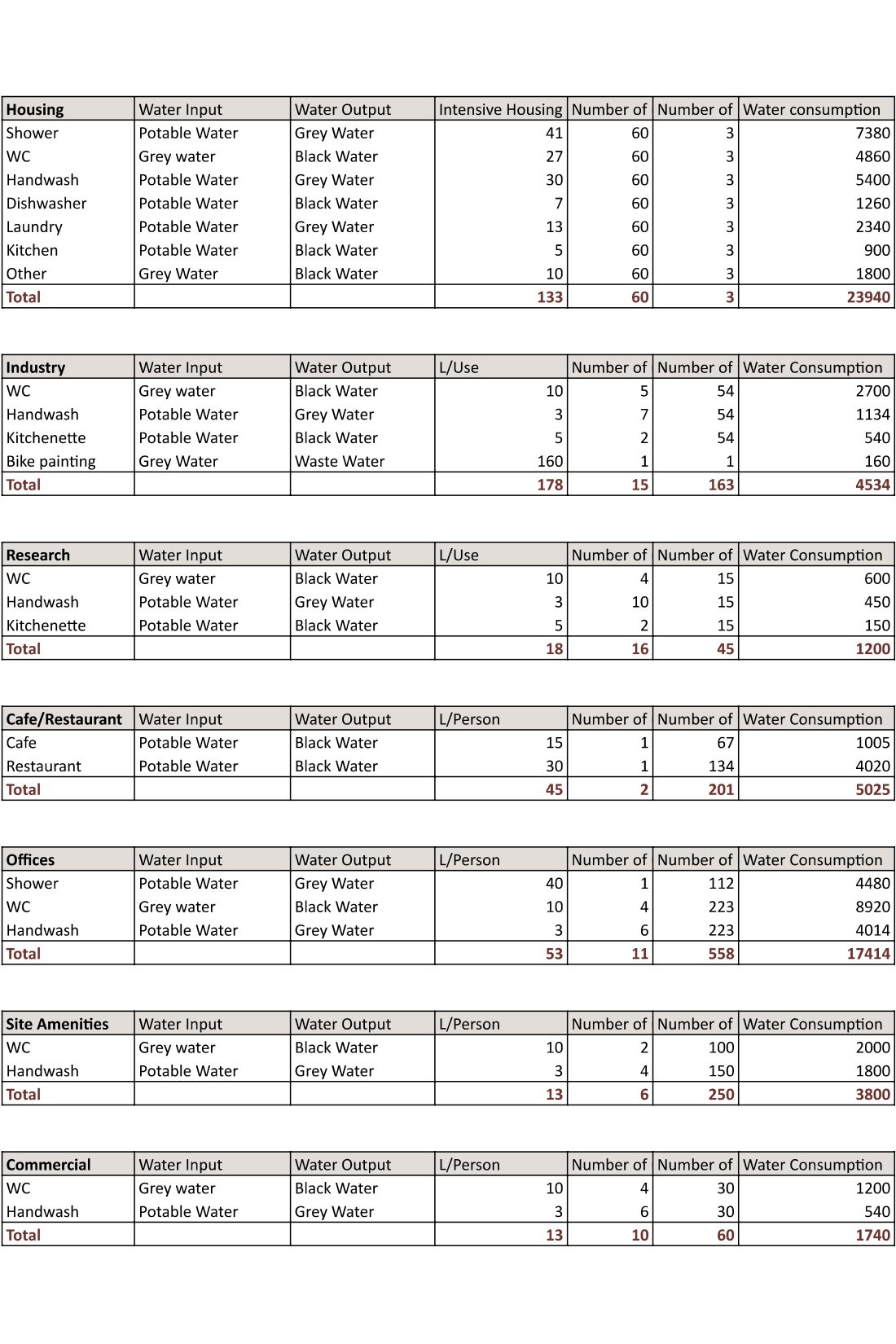
Water Cycle in the Building
Our goal was to make the building as self-sufficient as possible. However, given Barcelona’s current regulation, it is impossible to make the building completely self-sufficient in terms of water demand. However, we tried filtering and reusing as much of the water as possible. Two water flows (and thus filtration systems) were identified.
System 1: The black water form the kitchen, dishwasher and WC , which needs additional grease filtration given it’s more polluted state as a consequence of the feces and possible food residues, will go through a filtration process in the septic tank, followed by the filtration through different tanks with water-filtering plants, and will be used as a inlet in the WC. As each filtration step leads to a slight loss in available water, it seams reasonable to have more than WC water to be reused for the WC.
System 2: The grey water from the washing machine, showers and sink, which is considered “pretty clean and are mainly polluted by soap” easier to clean. it will go through a 3-step filtration process and used to irrigate the landscape and greenhouses.
These two systems would reduce the potable water requirement by 38%
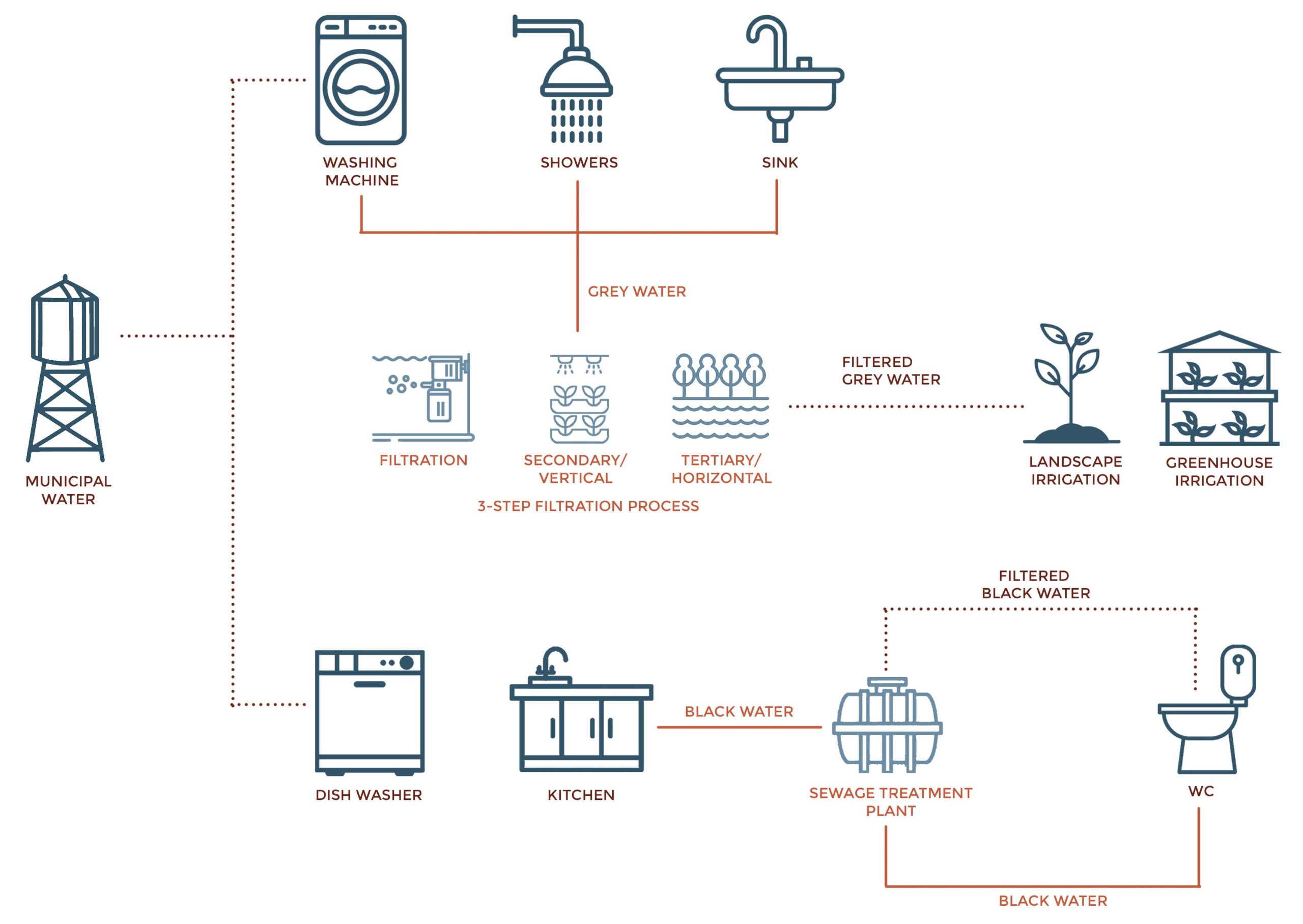

Water Saving Devices
The second system, filtering water for the green spaces on site, filters too much water for the desired use. This allows the installation of water-savind devices. By using water saving gadgets to control water flow from taps and showers, we further reduced the amount of water consumed and end up with a reduction of water demand of about 58%.

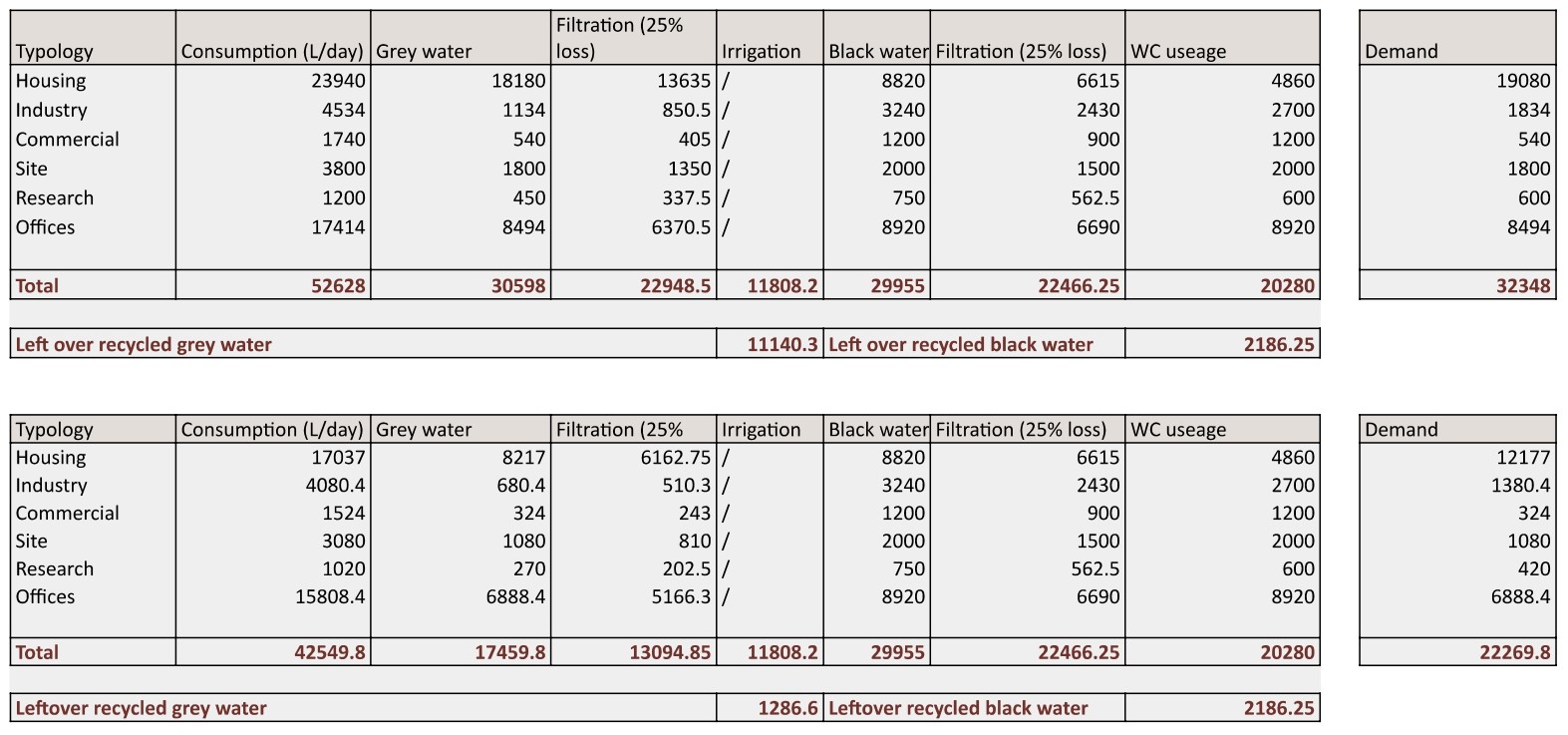
Grey Water Filtration Process
The filtration process happens in a 3 different steps. The first step is filters is a mechanical system. it filters out all the physical objects present in the water. Then, this water is filtered trough a vertical filtration system. The roots of the plants play a crucial role in this filtration system, as they capture al the organic matter in the water, using them as growth nutrients. This step has to optimize interaction (in terms of time and area) between the root and water. Once the water has passed through this vertical filtration system, it is ready for the third step of the filtration: the horizontal filtration. The water flows through a surface with plants, it mimics a swampy environment. The water level volume is larger then the soil volume. the water is the exposed to the sun, where it radiation to eliminate the residual bacteria and other micro biology in the water. After this last filtration step, the water is clean and ready to be used.
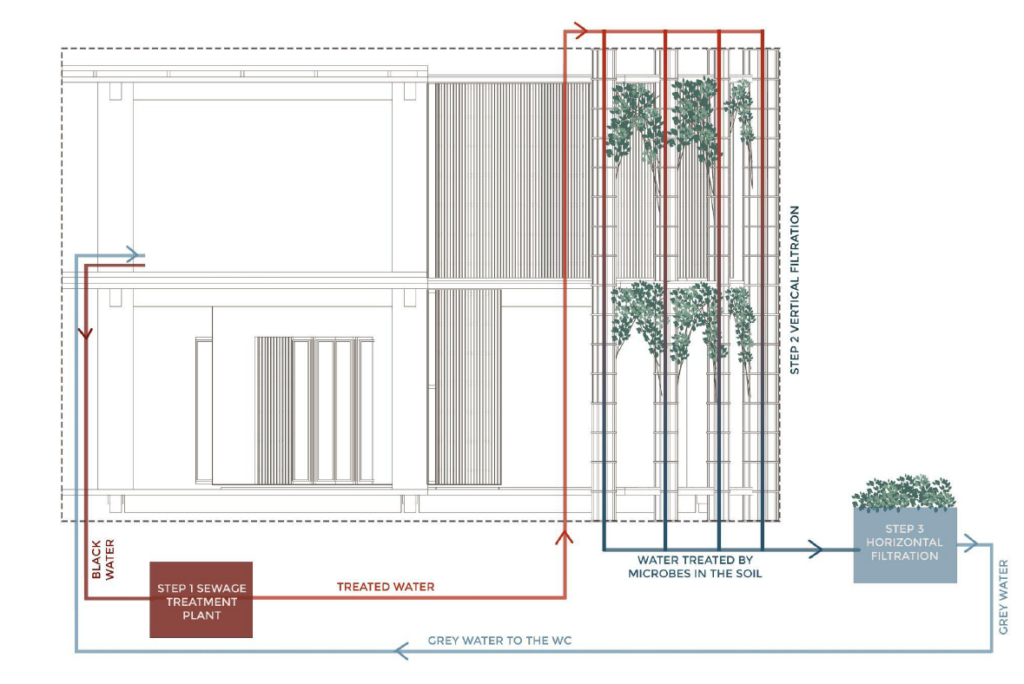

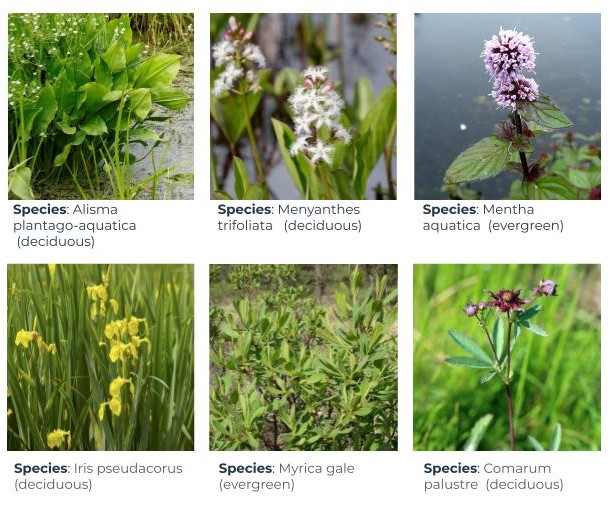
To filter grey water to potable water, the microbes in the soil play an important role. Choosing the types of plants used for this filtration process is a crucial step. we used the plants native to Catalunya or the Mediterranean region. The plants used for the secondary filtration are mostly deciduous plant to offer shade during the summer and allow the sun to go through the building envelope during winter (see envelop module). on the other hand, the tertiary treatment has plants based on ecology of the Parc Agrari del Baix Llobregat, a river delta east of Barcelona.
Rainwater Harvesting Strategies
As the climate is changing, rainfall becomes less frequent, but more intensive once it happens. We decided to adopt some strategies to allow the rainwater to be captured and to slowly infiltrate in the ground. Since the rooftops are either covered in vegetation or with solar panels, the rain will infiltrate in the soil in the first case and be captured and used as a reserve for the fire system in the second case. On the ground floor, we added basins as a design element. Most of our site will be sloped, allowing for water to flow into water bassins, forming a buffer for the sewage system in case of heavy rain.


Conclusive Numbers
The potable water required for the building is 52,628L per day. By recycling the water, we require 32,348L of water. By further using water saving devices, we only require 22,270L per day. By applying these approaches, the requirement of potable water reduces by 58%.

